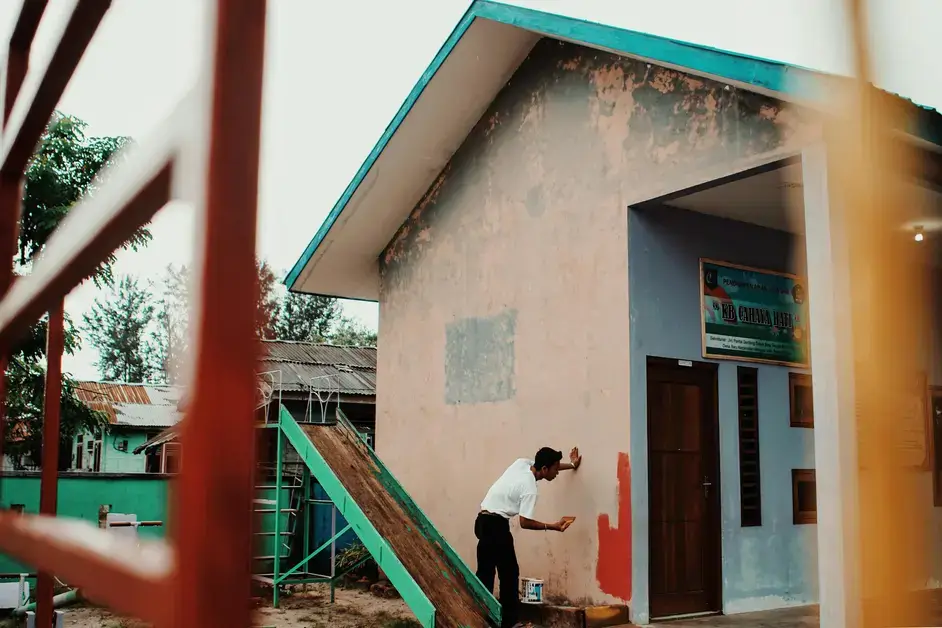
When revamping your home’s exterior, choosing the right types of exterior paint is crucial. It enhances curb appeal and protects your home from the elements. Painting the exterior of your home is a straightforward yet impactful method to provide a thorough makeover or a subtle rejuvenation. Whether you opt for do-it-yourself (DIY) or enlist the services of a professional painter, it’s a substantial undertaking. Exterior painting demands considerable time, resources, and effort. Moreover, errors may necessitate starting afresh or repainting within a year or two.
This guide will explore the different types of exterior paint and finishes, their properties, and suitability for various surfaces.
Exterior Paint Types
There are three main types of exterior paint formulas: acrylic, latex, and oil-based paints. Each type has its unique properties and benefits, making them suitable for different applications.
Acrylic Paint
Acrylic paint is known for its high-quality ingredients, which give it a thick and viscous consistency. The chemicals in acrylic paint make it elastic, allowing it to expand and contract with temperature changes. This makes acrylic paint ideal for exterior surfaces that experience varying weather conditions.
Latex Paint
Latex paint, also known as water-based paint, is a more affordable option compared to acrylic paint. It is easier to apply and clean up, making it a popular choice for DIY projects. Latex paint dries quickly and also expands and contracts with temperature fluctuations, similar to acrylic paint.
Oil-Based Paint
Although less commonly used today due to health concerns, oil-based paint is still preferred for certain exterior painting projects. It provides a smooth and durable finish, making it suitable for high-traffic areas such as doors and trim. However, oil-based paint requires proper ventilation during application and is more challenging to clean compared to acrylic and latex paints.
Paint Finishes
The finish of exterior paint determines its appearance and durability. There are several types of paint finishes to choose from, each offering unique benefits for different surfaces.
Flat Finish
Flat or matte finish paint has a non-reflective surface, making it ideal for older houses with imperfections that need to be hidden. While flat paint is not as durable as other finishes, it can provide a modern and clean look to exterior siding.
Satin Finish
Satin finish paint has a low-luster appearance, striking a balance between dull and shiny finishes. It is suitable for surfaces in good condition, such as wood or cement siding. Proper mixing of satin finish paint is essential to achieve a uniform sheen.
Semi-Gloss and Glossy Finish
Semi-gloss and glossy finish paints are highly durable and easy to clean. They are ideal for surfaces exposed to the elements, such as window sills and garage doors. Semi-gloss paint is less shiny than glossy paint and is recommended for doors and trim work.
Choosing the Right Paint and Finish
When selecting exterior paint and finish for your home, consider the following factors:
- Surface type: Different paints and finishes suit wood, cement siding, doors, trim, and floors.
- Durability: Choose a paint that can withstand high-traffic areas and weather conditions.
- Application: Ensure proper ventilation and follow recommended application techniques for best results.
- Appearance: Consider the desired look and sheen for your exterior surfaces.
- Longevity: Opt for paints and finishes that offer longevity and resist fading, cracking, and stains.
Factors Influencing Paint Choice
Several factors influence the choice of exterior paint and finish for your home:
Climate: Consider the local climate, including temperature fluctuations, humidity levels, and exposure to sunlight and precipitation. Choose paint that can withstand these environmental factors without deteriorating quickly.
Surface Material: The material of your exterior surfaces, such as wood, aluminum, fiber cement, stucco, plaster, or drywall, plays a role in determining the best paint type. Some paints adhere better to certain materials and provide enhanced protection.
Aesthetic Preferences: Your personal style and the desired appearance of your home’s exterior also influence paint selection. Consider the color palette, sheen level, and overall aesthetic impact when choosing paint colors and finishes.
Budget And Maintenance: Factor in the cost of paint, application tools, and maintenance requirements when making your decision. Some paints may require more frequent touch-ups or maintenance, affecting long-term costs.
Application And Maintenance Tips
Proper application and maintenance are essential for maximizing the lifespan and appearance of exterior paint. Follow these tips for a successful painting project:
- Clean and prepare surfaces before painting to ensure proper adhesion and durability.
- Use high-quality paint brushes, rollers, and sprayers for even and smooth application.
- Apply multiple coats of paint as recommended for optimal coverage and protection.
- Allow sufficient drying time between coats, and avoid painting in extreme weather conditions.
- Protective measures such as primers, sealants, and topcoats enhance paint performance and longevity.
- Regularly inspect and touch up painted surfaces to address any signs of wear, fading, or damage.
- Follow manufacturer instructions and guidelines for paint storage, disposal, and safety precautions.
In conclusion, understanding the various types of exterior paint and finishes is essential for a successful painting project. Whether you choose acrylic, latex, or oil-based paint, and opt for a flat, satin, semi-gloss, or glossy finish, ensure proper preparation and application for a durable and visually appealing finish.


